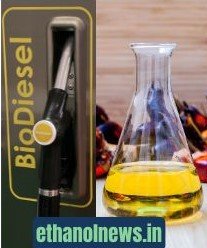Learn about fatty acid esters (biodiesel), their production using ethanol, benefits, and safety precautions. Discover how ethanol properties enhance biodiesel sustainability.
Fatty acid esters, commonly known as biodiesel, are an eco-friendly alternative to conventional fossil fuels. They are produced by the transesterification of fats and oils with ethanol or methanol. In this article, we will explore the essential ethanol properties in relation to biodiesel production, along with its benefits, applications, and safety considerations.

What are Fatty Acid Esters (Biodiesel)?
Biodiesel is a renewable and biodegradable fuel derived from vegetable oils, animal fats, or recycled cooking oil. It consists of fatty acid esters, which are formed when triglycerides react with an alcohol (typically ethanol or methanol) in the presence of a catalyst.
Role of Ethanol in Biodiesel Production
Ethanol plays a crucial role in biodiesel production by acting as an alcohol source for transesterification. Here’s why ethanol is used in this process:
- Renewable Source: Ethanol can be produced from plant-based materials like sugarcane and corn.
- Environmental Benefits: Using ethanol reduces greenhouse gas emissions and enhances biodiesel sustainability.
- Improved Solubility: Ethanol enhances the solubility of reactants, improving biodiesel yield.
Chemical and Physical Properties of Ethanol in Biodiesel Production
- Chemical Formula: C₂H₅OH
- Boiling Point: 78.37°C (173.1°F)
- Polarity: Helps in the dissolution of oil and fat molecules.
- Flammability: Highly flammable with a flashpoint of 13°C (55°F).
- Miscibility: Completely miscible with water and various organic solvents.
Process of Biodiesel Production Using Ethanol
The biodiesel production process using ethanol involves the following steps:
- Feedstock Selection: Vegetable oils (soybean, palm, canola) or animal fats are chosen as raw materials.
- Ethanol Addition: Ethanol is mixed with a catalyst (sodium hydroxide or potassium hydroxide).
- Transesterification Reaction: The triglycerides in oils react with ethanol to form fatty acid ethyl esters (FAEE) and glycerol as a byproduct.
- Separation and Purification: The biodiesel is separated from glycerol and purified to meet fuel standards.
- Storage and Usage: The final biodiesel product is stored for use in diesel engines.
Benefits of Biodiesel (Fatty Acid Esters)
- Eco-Friendly: Reduces carbon emissions and dependence on fossil fuels.
- Renewable Resource: Made from plant-based oils and animal fats.
- Improved Lubricity: Enhances engine performance and longevity.
- Lower Toxicity: Non-toxic and biodegradable, making it safer for the environment.
- Compatibility: Can be used in existing diesel engines with minimal modifications.
Safety Considerations When Handling Ethanol and Biodiesel
- Flammability: Store ethanol and biodiesel away from open flames and heat sources.
- Proper Ventilation: Ensure well-ventilated areas when processing biodiesel to prevent inhalation hazards.
- Protective Equipment: Use gloves, goggles, and protective clothing when handling chemicals.
- Storage Regulations: Store in appropriate containers to prevent spills and contamination.
Conclusion
Fatty acid esters (biodiesel) offer a sustainable and renewable alternative to fossil fuels. Ethanol plays a key role in the biodiesel production process, making it an essential component of eco-friendly energy solutions. Understanding ethanol properties and its interaction with biodiesel helps in improving fuel efficiency, sustainability, and environmental impact.
Additional Resources & References
For further reading on ethanol properties and biodiesel production, check out these resources:
For more insights on renewable energy and sustainable fuels, stay updated with our blog!
